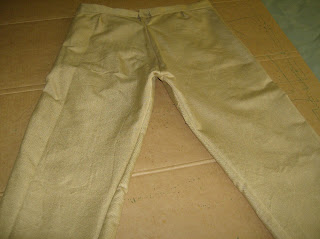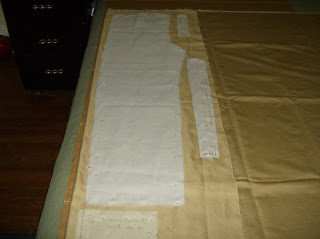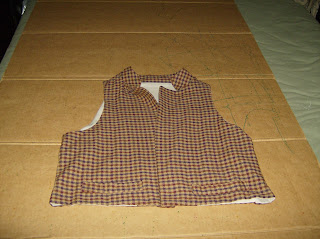For the 1812 trousers, I already had a couple of patterns. I had the Butterick 3648 Making History pattern and the Mill Farm Man's Breeches circa 1770 - 1800. This was the Waterloo pattern. It just did not come together. One of the online pattern stores that I use is
http://www.lostcoasthistorical.com/ , the store was having a sale with a 20% discount, so, I decided to buy the Buckaroo Bobbins Authentic vintage western pattern for broad fall trousers. Once, I got the pattern, I read the instructions, they were clearly written, step by step. I really liked that. It really helps, especially, if you have not made a particular historical item before.
As I have said before, I no longer cut up my paper patterns, but instead, I make a copy and use the copy. In that way, I always have the original to review and check markings etc. Once you cut a paper pattern, it is cut, and it is so easy to lose a pattern piece.
I need to definitley make a mockup of these trousers first. The above picture is of the inside flap that the fall covers.
Lesson 1, read your pattern instructions before you start, once or twice at least. If you are not sure about some particular aspect of the pattern instructions, you can research it to find out how to do it, even obtain a tutorial, before you have to do it during construction.
That's Max, he really wanted to lay right on the pattern and fabric. As you can see, he's as close to it he can get. Other times, I tell him no, he will just walk across the fabric and pattern since he is not allowed to lay on it.
Mockup first, extra 2 1/2 yards of remant material that I got from my favorite fabric store, Jomar. Anyway, it was just enough.
The inside flaps have been attached. I think that they have a name, but I can't remember. The mockup fabric is a nice cotton blend. Actually, the color is pretty good for the period as well. The trousers tended to be lighter in color for the day and darker for even or formal wear. However, white breeches / trousers were also worn for formal events as well.





















































